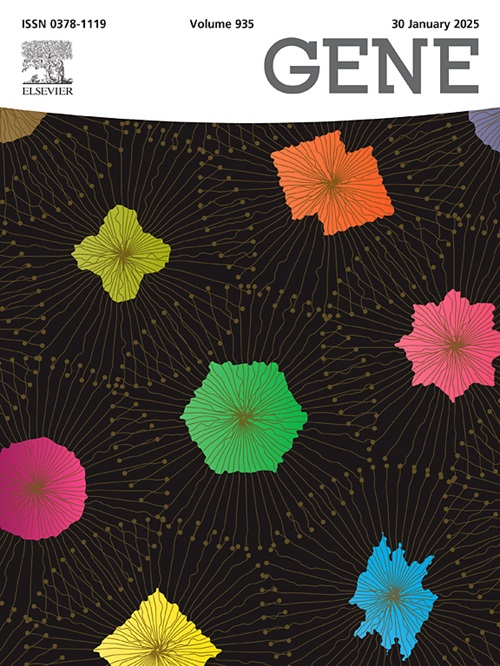Multi-gene anoikis signature combined with tumor microenvironment stratifies prognosis in cutaneous melanoma with experimental validation of PTK6
IF 2.4
3区 生物学
Q2 GENETICS & HEREDITY
引用次数: 0
Abstract
Background
Cutaneous melanoma (CM) exhibits aggressive behavior driven by anoikis resistance and dysregulated tumor microenvironment (TME). The combined prognostic value of anoikis susceptibility and immune landscape remains uncharacterized.
Methods
Using transcriptomic data from 471 TCGA-CM patients, we developed an 11-gene anoikis risk score (RS) through LASSO-Cox regression, with external validation in the GSE65904 cohort (n = 214). This risk score was integrated with ESTIMATE-quantified immune/stromal features to construct the RS-TME classifier. Functional validation focused on Protein Tyrosine Kinase 6 (PTK6), a key prognostic driver, employing in vitro and in vivo models.
Results
We established an 11-gene RS with superior predictive capacity compared to conventional clinical indicators. Consensus clustering identified two molecular subtypes where Cluster B showed significantly improved survival compared to Cluster A (p < 0.001). Single-cell RNA sequencing confirmed immune cells, particularly macrophages, possessed substantially higher anoikis scores than malignant cells. This microenvironment foundation guided development of the RS-TME classifier, which stratified patients into three prognostic groups. Low-risk/high-TME patients exhibited significantly superior survival outcomes (p < 0.001), with external validation in the GSE65904 cohort (p = 0.002). Crucially, PTK6 knockdown suppressed tumor progression through increased apoptosis, reduced cell viability, impaired migration, and decreased tumor volume, mediated by Hippo pathway activation.
Conclusions
The RS-TME classifier is the first model integrating anoikis resistance and immune microenvironment to predict survival and immunotherapy response. Simultaneously, PTK6 targeting suppresses CM progression via Hippo-mediated anoikis resistance, providing a foundation for personalized treatment strategies.
多基因标记结合肿瘤微环境对皮肤黑色素瘤的预后分层,PTK6的实验验证。
背景:皮肤黑色素瘤(CM)表现出由anoikis抵抗和肿瘤微环境失调(TME)驱动的攻击行为。anoikis易感性和免疫景观的综合预后价值仍未确定。方法:利用471例TCGA-CM患者的转录组学数据,通过LASSO-Cox回归建立了11个基因的anoikis风险评分(RS),并在GSE65904队列(n = 214)中进行了外部验证。该风险评分与estimate量化的免疫/基质特征相结合,构建RS-TME分类器。功能验证的重点是蛋白酪氨酸激酶6 (PTK6),这是一个关键的预后驱动因素,采用体外和体内模型。结果:与常规临床指标相比,我们建立了具有优越预测能力的11基因RS。结论:RS-TME分类器是第一个将anoikis耐药和免疫微环境结合起来预测生存和免疫治疗反应的模型。同时,PTK6靶向通过hippo介导的anoikis耐药抑制CM进展,为个性化治疗策略提供基础。
本文章由计算机程序翻译,如有差异,请以英文原文为准。
求助全文
约1分钟内获得全文
求助全文
来源期刊

Gene
生物-遗传学
CiteScore
6.10
自引率
2.90%
发文量
718
审稿时长
42 days
期刊介绍:
Gene publishes papers that focus on the regulation, expression, function and evolution of genes in all biological contexts, including all prokaryotic and eukaryotic organisms, as well as viruses.
 求助内容:
求助内容: 应助结果提醒方式:
应助结果提醒方式:


